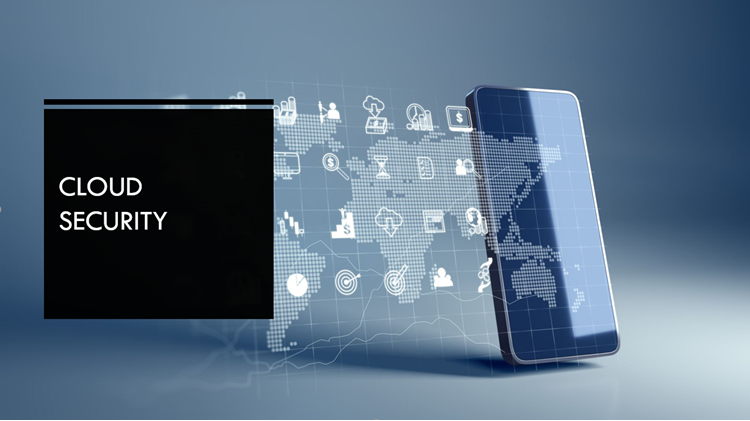“Hello my fellow technology enthusiasts, I wanted to speak about a subject that is recognized in its true nature by all but seldom understood. The topic is “Cloud Computing” and will be addressed in series. So, let ‘s dive into the world of cloud computing. In this blog I am going to focus on cloud security.
What is Cloud Security
How your data is protected?
Cloud security is a shared responsibility
Security issues
Are public clouds secured?
Why you should embrace “Zero Thrust”?
What is Cloud Security?

The security of cloud computing consists of a collection of rules, regulations, processes, and technology that work together to safeguard cloud-based services, data, and infrastructure. This protection protocols are designed to secure cloud data, facilitate compliance with legislation and protect the privacy of clients, as well as to set authentication standards for specific users and devices. Cloud protection can be designed to suit the precise needs of the enterprise by authenticating access to traffic filtering. And since these rules can be programmed and handled in one place, overhead administration is minimised, and IT departments are encouraged to work on other business sectors.
The way cloud protection is delivered will rely on the cloud provider or the technologies in place for cloud security. However, the shared duty between the company owner and the solution provider should be to enforce cloud protection procedures.
Click here for cyber security related issues of businesses
How is your data protected?
To secure the records, cloud service providers use a variety of approaches.
Firewalls: A keystone to cloud architecture is firewalls. Firewalls secure the network security perimeter and the end-users. Firewalls also secure traffic between multiple applications that are saved in the cloud.
Access controls: By allowing you to set access lists for various properties, access controls protect records. For example, you might allow access to the application for specific workers, while limiting others. A basic rule is to allow workers access to only the instruments they need to do their work. You may retain sensitive information from unauthorised insiders or hackers with compromised passwords while ensuring tight access control.
Data masking: Identifiable information, such as addresses, is encrypted by data masking. By maintaining significant information confidential, this protects data privacy.
Data security: Digital private networks, encryption, or masking provide Data Storage techniques. Remote workers can connect to corporate networks via virtual private networks (VPNs). For remote access, VPNs accommodate tablets and smartphones.
Click here for cloud based solutions for the businesses like Google, AWS and Azure
Cloud security is a shared responsibility
You are responsible for securing your own space within the cloud, regardless of what cloud deployment you are using. Using a cloud managed by someone else does not mean that you can sit back and rest. A big cause of security breaches is inadequate due diligence. Cloud encryption is the responsibility of everyone.
An obligation that is shared between the service vendor and the customer is cloud security. In the Mutual Responsibility Model, there are essentially three types of responsibilities: duties that are always the provider’s, duties that are always the customer’s, and duties that differ depending on the business model: Technology as a Service ( IaaS), Network as a Service ( PaaS), or Software as a Service (SaaS).
Software-as-a-service (SaaS): The duty of consumers to protect their data and device access.
Platform-as-a-service (PaaS): The obligation of customers to protect their information, user access, and apps.
Infrastructure-as-a-service (IaaS): Customers are accountable for protecting their files, user rights, software, operating systems, and virtual network traffic.
Security issues in cloud
The online cloud not only poses questions of anonymity, it also shares security worries. In a recent report, stability is viewed as the cloud environment ‘s top obstacle. In cloud computing, the key challenges occur in determining which group is responsible for which form of protection. This security division problem exists since there is no uniform API. According to the cloud protection alliance, vulnerable interfaces, shared technology challenges, hostile insiders, account hijacking, data failure or leakage and unexplained risk profiles are the key problems in cloud computing.
Click here to know more about cloud computing security issues
- Malware Injections
- Authentication and identity management
- Data breaches
- Data loss
- Backup
- Insecure APIs
- Failure to Recognise Security Responsibilities
- Denial of Service Attacks
- Shared Vulnerabilities
Are public clouds secured?
For several kinds of workloads, public clouds are sufficiently stable, but they are not right for all, mostly because they lack private cloud isolation. Public clouds allow multitenancy, which ensures that among other “tenants” you borrow processing resources (or physical space) from the cloud provider. For the cloud service, each tenant signs an SLA that records who is responsible and responsible for what.
Fortunately, there are several compliance guidelines, rules, and control mechanisms recognised by the sector, such as the Cloud Controls Matrix. Through deploying external security mechanisms (such as encryption and DDoS mitigation techniques) that shield workloads from a compromised infrastructure, you can also isolate yourself in a multi-tenant environment.
Click here for general IT Support services for Businesses
Why you should embrace “Zero Thrust”?
Zero Trust’s fundamental concept of cloud security is not to blindly trust anyone or something within or outside the network and check everything (i.e. approve, audit, and secure).
For example, Zero Trust encourages a policy of least privilege governance whereby users only have access to the tools they need to fulfil their duties. Likewise, it calls on developers to guarantee that web-facing users are sufficiently covered. For example , a hacker who takes over the programme will have privileges to download and change data from the database if the developer has not regularly blocked ports or has not enforced permissions on a ‘as required’ basis.
To make cloud network protection much more granular, Zero Trust networks use micro-segmentation. In data centres and cloud installations, micro-segmentation establishes protected zones, while segmenting workloads from each other, protecting all within the zone and implementing policies to protected traffic within zones.
